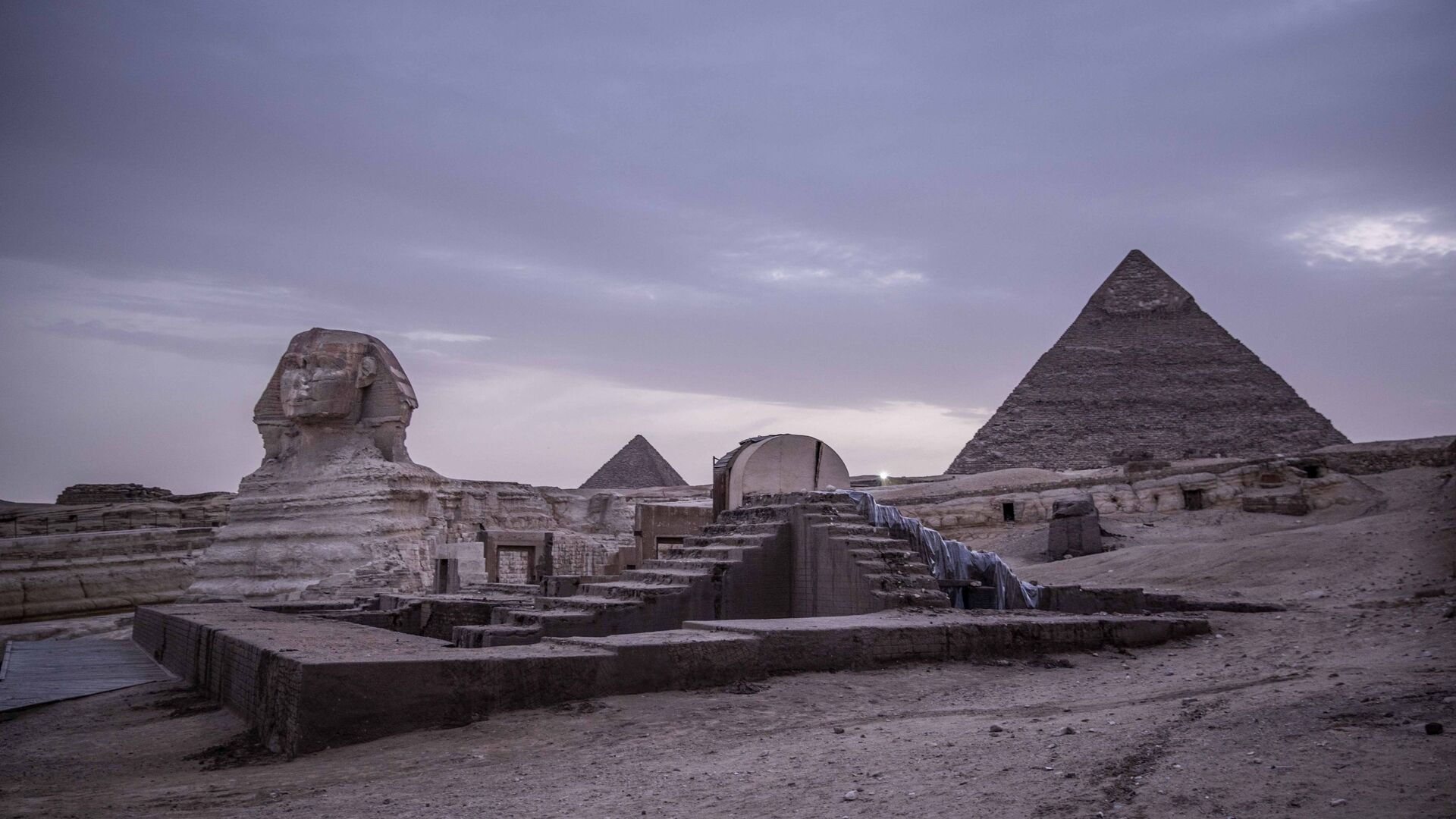Archeologists Uncover Two Giant Sphinxes Built 3,300 Years Ago

© AP Photo / Nariman El-Mofty
Subscribe
A team of archeologists, while restoring the funerary complex of King Amenhotep III, uncovered two large Sphinxes built around 3,300 years ago. The discovery was made near the modern-day city of Luxor at the “Temple of Millions of Years.”
The 26-foot-tall limestone statues depict King Amenhotep III as a Sphinx, a mythical creature with the body of a lion and the head of a human. Amenhotep is depicted with a royal beard and wearing a mongoose headdress and a wide necklace, according to the Egyptian Ministry of Tourism and Antiquities.
A colossal pair of limestone #sphinxes have been unearthed at the ancient Egyptian #temple of Amenhotep III in Luxor. https://t.co/FCdQAI5GZX pic.twitter.com/UrZEg83fnZ
— Ancient Origins (@ancientorigins) January 22, 2022
The statues were discovered half-submerged in water by an Egyptian-German team of archeologists. Three granite busts of the goddess of war, Sekhmet, were also discovered. The goddess is often depicted as a lion and is associated with healing. She was believed to lead the pharaohs in warfare, protect them in life, and guide them to the afterlife.
The large sphinxes indicate the location of a procession road. After restoration, the sphinxes were found to have the “beloved of the god Amun-Re" written on their chest. Amun-Re was a major god and was worshiped as the creator deity.
King Amenhotep III was the ninth pharaoh of the 18th dynasty. His reign lasted close to four decades, beginning around 1390 BC. Amenhotep ruled at the height of ancient Egypt’s international prestige and power. Over 250 statues of him have been identified, the most of any pharaoh.
Colossal statuary group of Amenhotep III, his wife, and daughters.
— Egyptian Times 🇪🇬 (@Egyptiantimes1) January 17, 2022
Ancient Egypt 🇪🇬 pic.twitter.com/eP9GlJDPSa
The funerary complex for Amenhotep was built close to the Nile around the ancient Egyptian capitol of Thebes. It was destroyed by a massive earthquake in ancient times. Over the years, the desert covered the remains.
The site has been continuously excavated and restored since 1998 by archeological teams under the supervision of Egypt’s tourism ministry.
